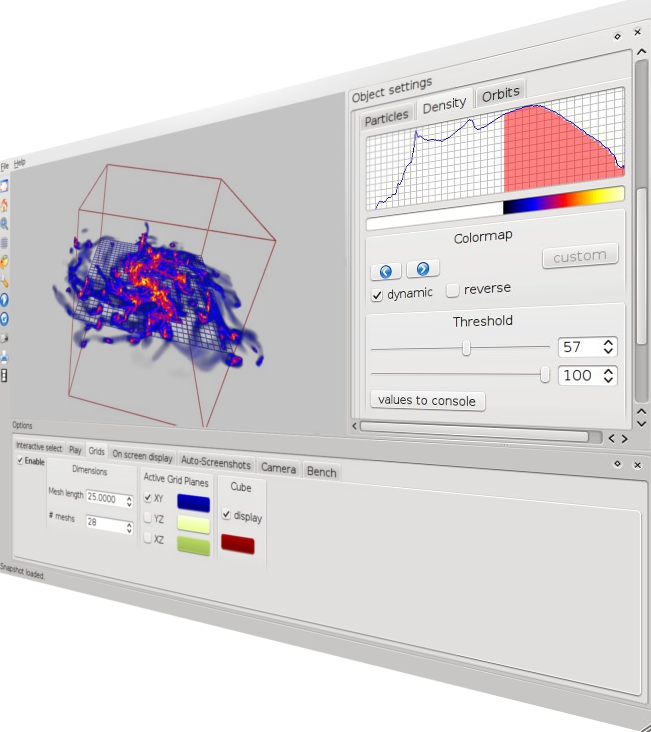Glnemo2 is an interactive 3D visualization program which displays particles positions of the different components (gas, stars, disk, dark mater halo, bulge) of an N-body snapshot. It's a very useful tool for everybody running N-body simulations from isolated galaxies to cosmological simulations. It can show quickly a lot of information about data by revealing shapes, dense areas, formation of structures such as spirals arms, bars, peanuts or clumps of galaxies. Glnemo2 has been designed to meet the requirements of the user, with simplicity in mind, easy to install, easy to use with an interactive and responsive graphical user interface (based on Digia QT 4.X/5.X API) , powerful with a fast 3D engine (OPenGL and GLSL), and generic with the possibility to load different kinds of input files.
Features:
You can zoom in/out, rotate, scale, translate, select different particles and plot them in different blending colors, color particles according to their density, play with the density threshold, trace orbits, play different time steps, take automatic screenshots to make movies, select particles using the mouse, fly over your simulation using camera path. All this features are accessible from a very intuitive graphic user interface.
Supported input files format:- NEMO files (http://carma.astro.umd.edu/nemo)
- Gadget 1 and 2, little and big endian files (http://www.mpa-garching.mpg.de/gadget/)
- Gadget 3 (HDF5)
- RAMSES files (http://www.ics.uzh.ch/~teyssier/ramses/RAMSES.html)
- TIPSY files (http://www-hpcc.astro.washington.edu/tools/tipsy/tipsy.html)
- FITS files, 2D and 3D data cubes (http://fits.gsfc.nasa.gov/)
- FTM files (Clayton Heller's sph/nbody code)
- phiGRAPE file (http://www-astro.physik.tu-berlin.de/~harfst/index.php?pid=8)
- list of files stored in a file
- realtime gyrfalcON simulation via a network plugin (see glnemo2/gyrfalcon/README)
Glnemo2 uses a plugin mechanism to load data, so it's easy to add a new file reader. It uses the latest OpenGL technology like, shaders (glsl), vertex buffer object, frame buffer object, and takes in account the power of your graphic card to accelerate the rendering. Millions of particles can be rendered, in real time, with a fast GPU.
Glnemo2 runs on Linux, Windows(using minGW compiler), and MaxOSX, thanks to the QT4 and QT5 API.
Licence:
Glnemo2 is open source and released under the terms of the CeCILL2 Licence
